Decoratively woven to produce a durable and attractive pattern, canework is a much admired feature of many antique chairs and sofas. Whilst historic rattan can survive hundreds of years in a good environment, many pieces are not so lucky and have faced various environmental challenges.
 Above: three canework chairs from different eras
Above: three canework chairs from different eras
Broken and deteriorating cane furniture often comes into our studio for restoration, whether this is for a sensitive surface clean and stabilisation, or an entirely new piece of woven rattan. This article will look into the history of canework, including the highly skilled craftsmanship that goes into its revival.

Cane furniture history
Caning is an ancient artform, with examples dating as far back as ancient Egypt. Its story in Britain begins in the 17th century, when the East India Company began to import rattan palm canes from the Malay Peninsula. Under the reign of Charles II, furniture makers soon took to this new material, producing the woven cane patterns that craftsmen still use today.
 Above: a selection of 17th century cane chairs
Above: a selection of 17th century cane chairs
Interestingly, the success of cane furniture is tied to The Great Fire of London in 1666, when much of the city lost the entire contents of their homes. In need of easily affordable furniture, caning was seen as a quick solution to the problem. Large segments of furniture, that would have originally been carved in solid wood, could now be replaced with an inexpensive, light-weight import. At the time, traditional furniture makers petitioned parliament to restrict the booming sale of cane furniture; they were unsuccessful in their attempt and caning became a standard material in English chair making.
 Above: a miniature daybed crafted from walnut and cane, 1689–1702
Above: a miniature daybed crafted from walnut and cane, 1689–1702
By the 18th century, canework was seen as a necessary part of furniture design when an area needed flexibility or a light-weight alternative to solid wood. Thomas Sheraton especially focused on rattan weaving as a versatile material in his famous furniture directory, including it on everything from armchairs and sofas to bed frames and cribs.
 Above: detail of a cane seat chair by Giles Grendey, 1735-40
Above: detail of a cane seat chair by Giles Grendey, 1735-40
Rattan would be revived again in the mid 19th century, when designer Michael Thonet created his iconic cafe chairs. Using a mixture of bent wood, carving and caning, his durable seats could be found in fashionable city districts around the world.
 Above: three mid 19th century chairs by Gebrüder Thonet
Above: three mid 19th century chairs by Gebrüder Thonet
By the Edwardian period, cane furniture was still being produced as an easily affordable set for casual rooms in the home. The Edwardian conservatory inspires much of the aesthetic we know today, as rattan comes from a tropical climate it is well-suited to this environment – unlike solid furniture, caning will not so easily warp or discolour with constant sunlight and high humidity.
Weaving cane furniture
There are several steps to creating a typical cane weave pattern, this process can be fairly complex and take many hours to successfully complete. Below is a general outline of the steps involved in weaving a cane chair seat. The furniture begins with a wooden frame that has several holes for the rattan to be secured through.
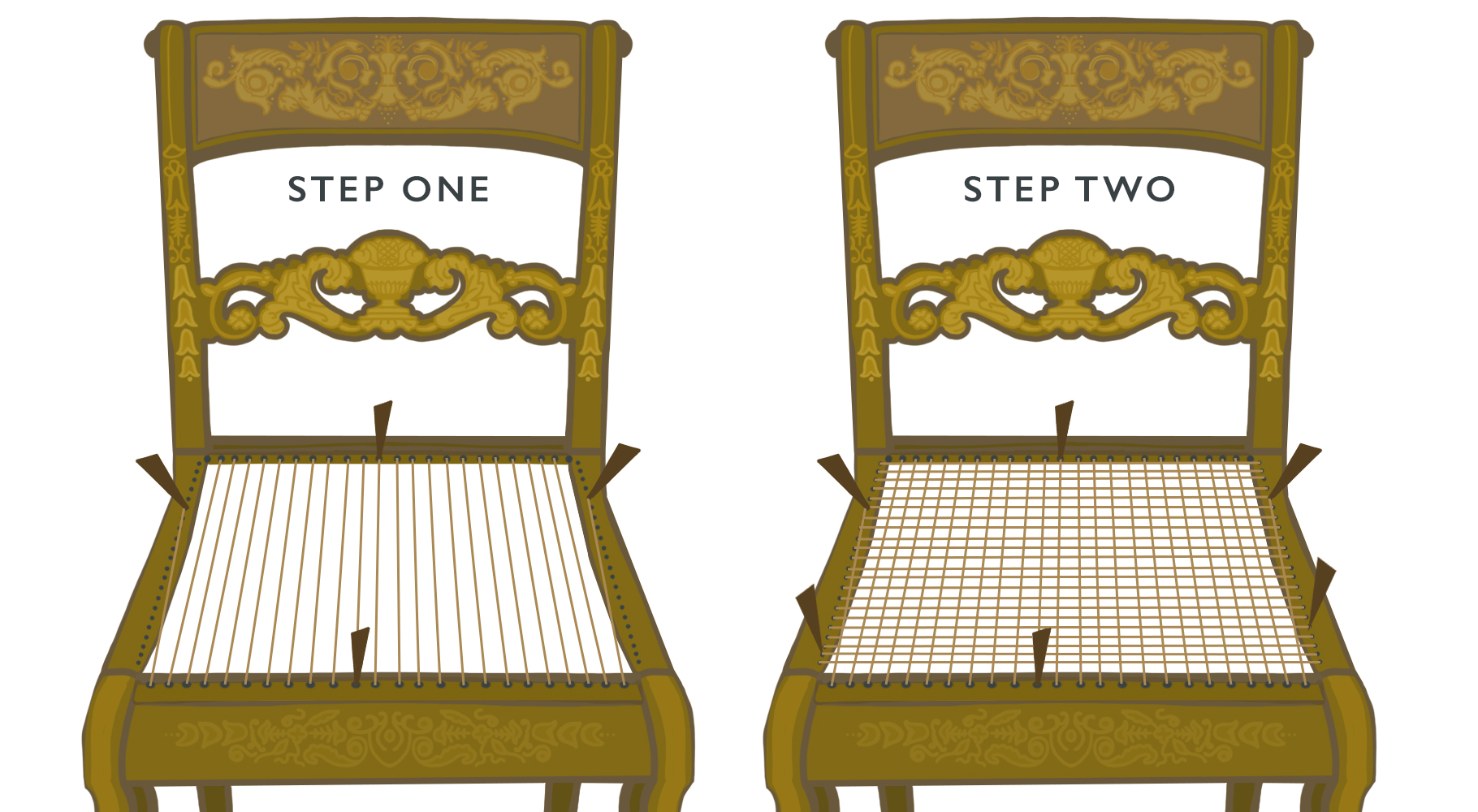
The first step takes the cane strip vertically across the chair frame. This is then repeated horizontally. Prior to weaving, cane strips are soaked in water to improve flexibility and make them easier to work with. As one continuous strip is used for each angle, the ends are held in place with a wooden pin.
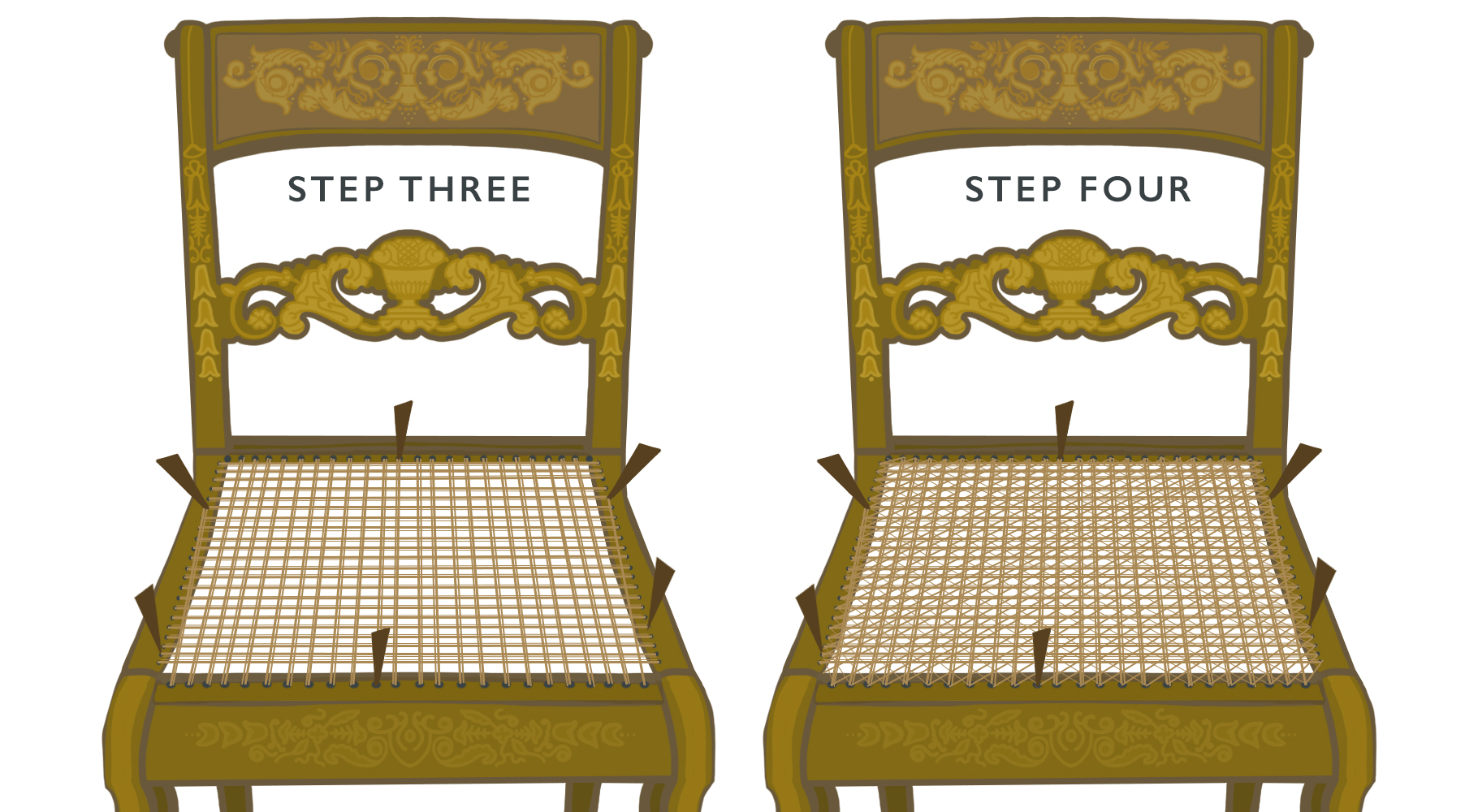
These steps are repeated, weaving the cane in and out to add extra structure and stability. Finally, they are woven across the seat from both angles, creating a secure and aesthetically pleasing design.
Cane seat restoration
Cane chairs can become torn and punctured over time, especially when they are in constant use. Our team also comes across examples that have become stained and discoloured due to smoke or mould growth. The frame of the chair may become loose, when joins begin to fail the cane areas may come under pressure and begin to unravel. Luckily, our furniture experts can restore both the frame and caning, allowing the furniture to continue as a practical item in your home.
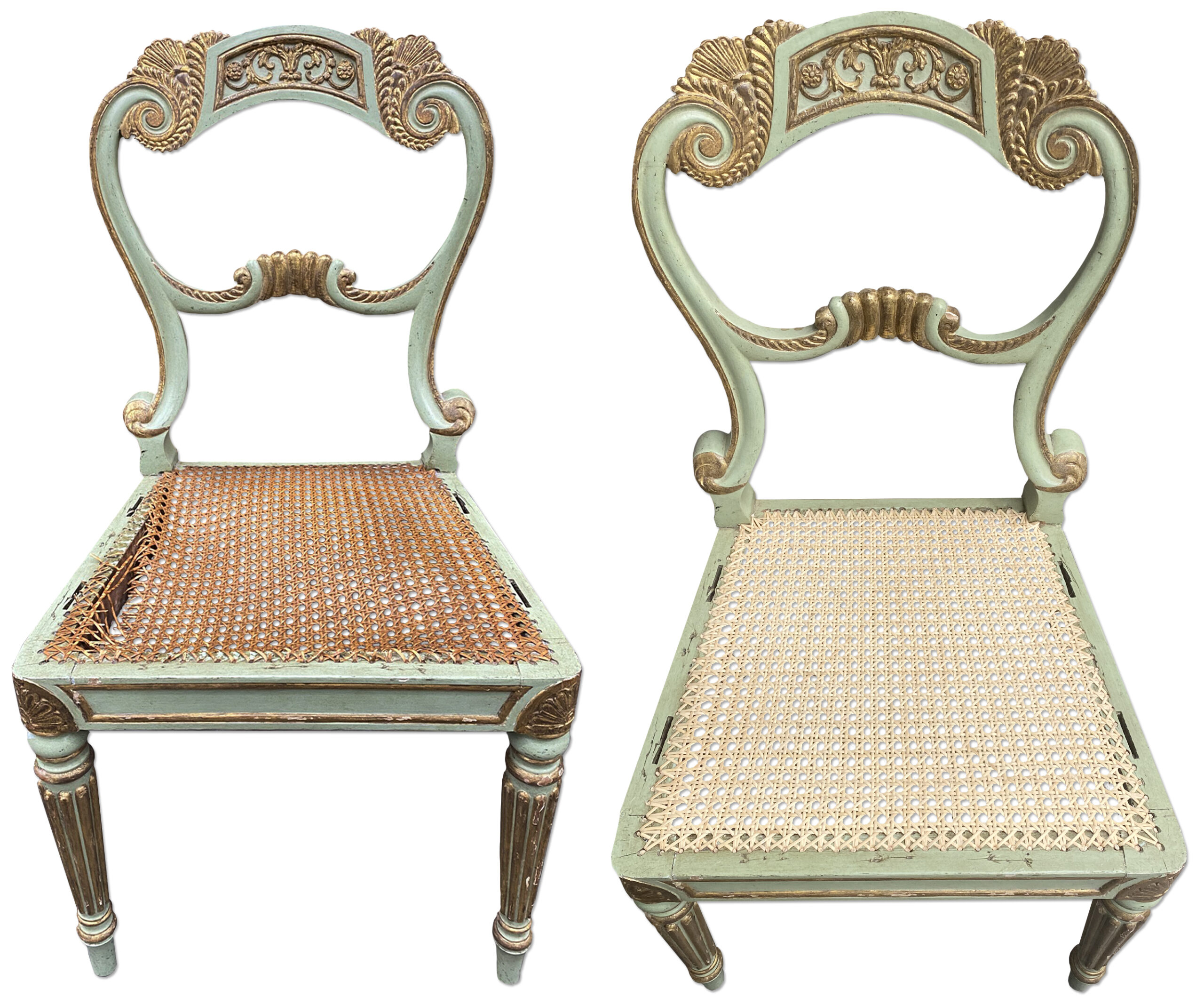
Above is an example of a rococo style chair that was recently revived by our furniture experts. The cane seat was fully restored and the frame was sensitively cleaned – allowing for a finish that retained its antique appeal. Below is an example of an accidentally damaged cane seat on a 19th century side chair, the result allowed it to return to our client as good as new.

Like all forms of restoration, the repair of your chair can be completed to a condition of your preference. Some of our clients opt for a bright and fully revived finish, whilst others opt for an aged look that only focuses on the chairs stability.
How can we help?
If you have any questions about restoration, our team is always happy to help. Email us via [email protected] or call 0207 112 7576

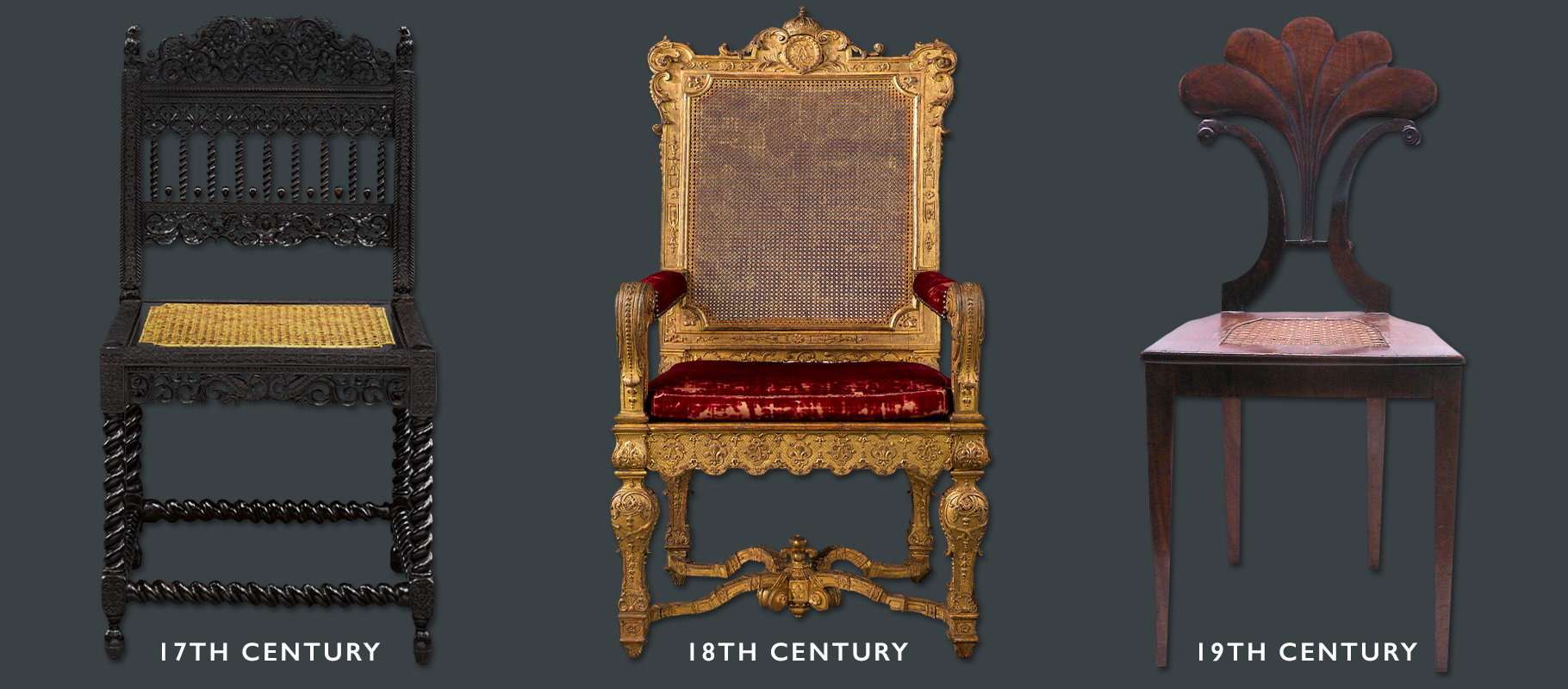 Above: three canework chairs from different eras
Above: three canework chairs from different eras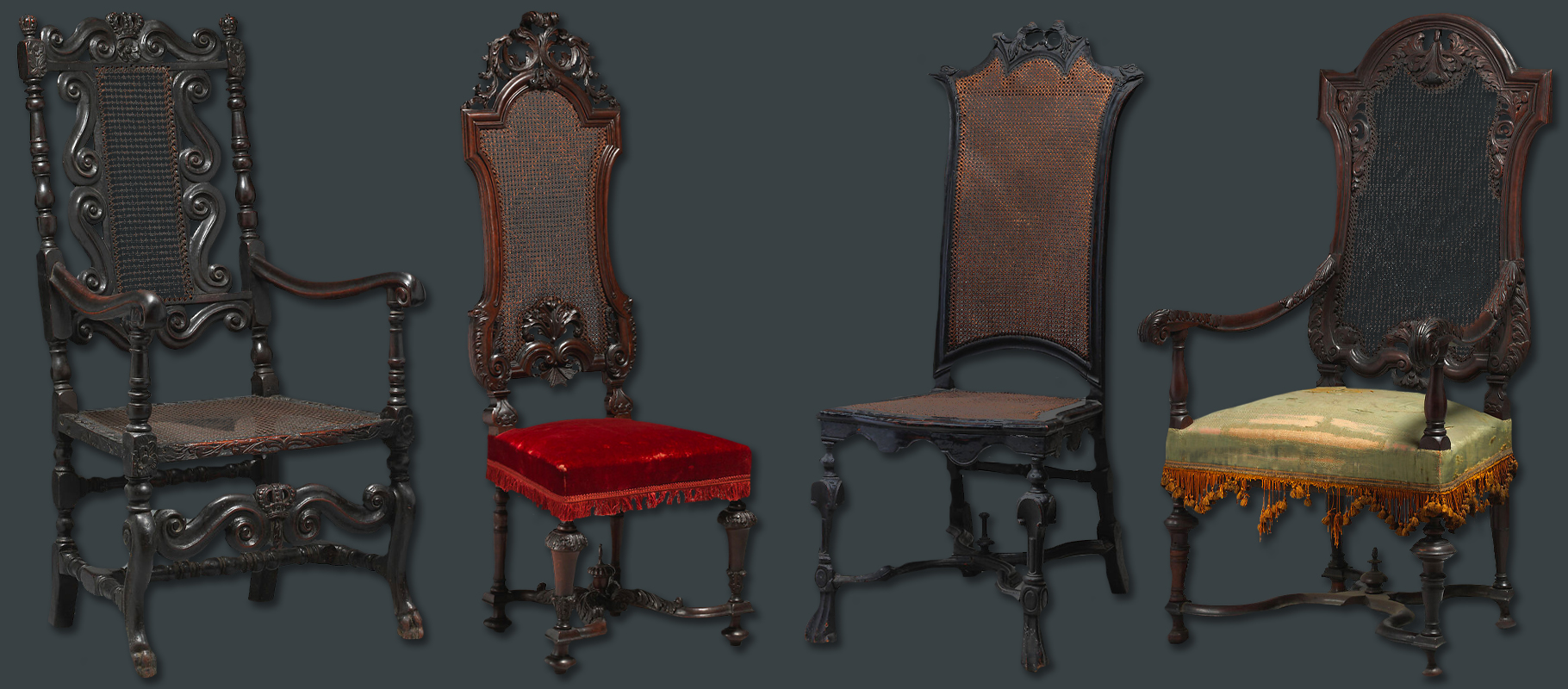 Above: a selection of 17th century cane chairs
Above: a selection of 17th century cane chairs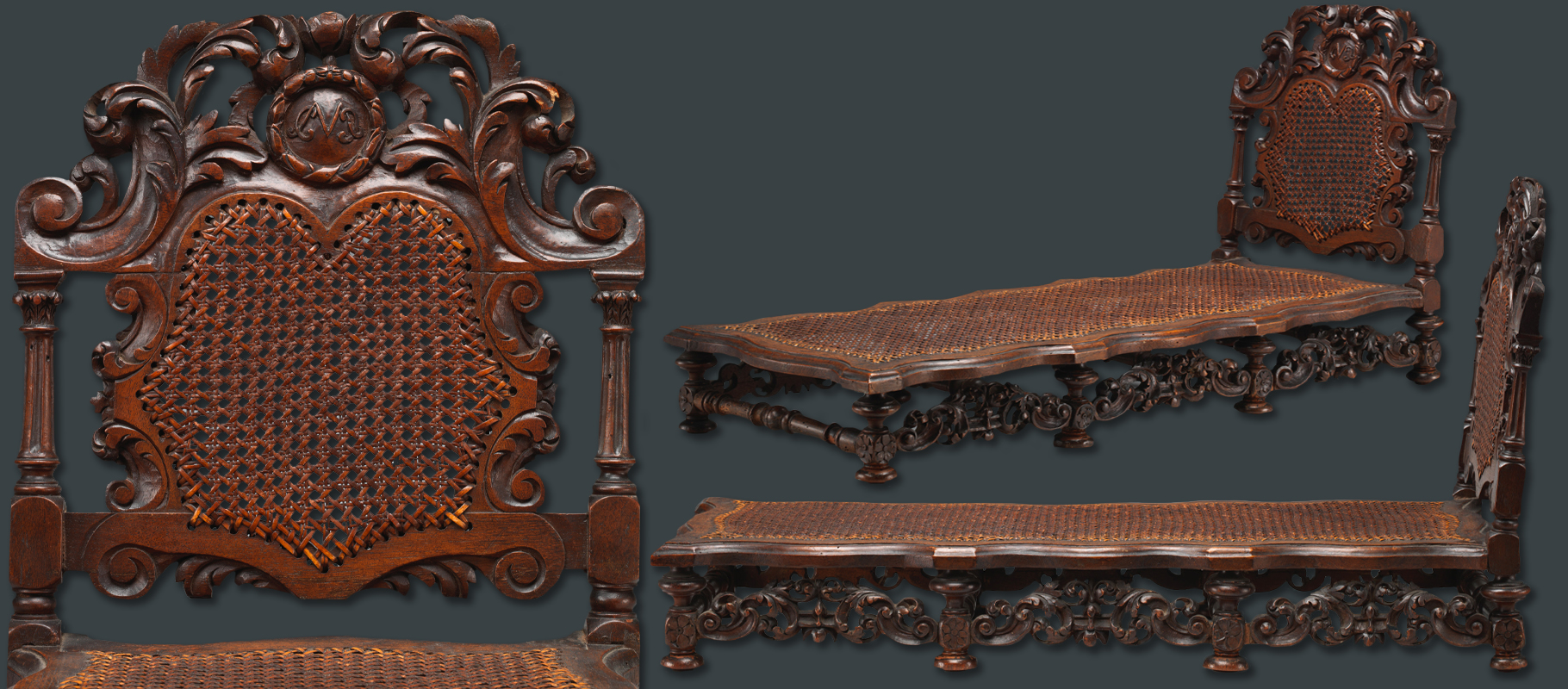 Above: a miniature daybed crafted from walnut and cane, 1689–1702
Above: a miniature daybed crafted from walnut and cane, 1689–1702 Above: detail of a cane seat chair by Giles Grendey, 1735-40
Above: detail of a cane seat chair by Giles Grendey, 1735-40 Above: three mid 19th century chairs by Gebrüder Thonet
Above: three mid 19th century chairs by Gebrüder Thonet




